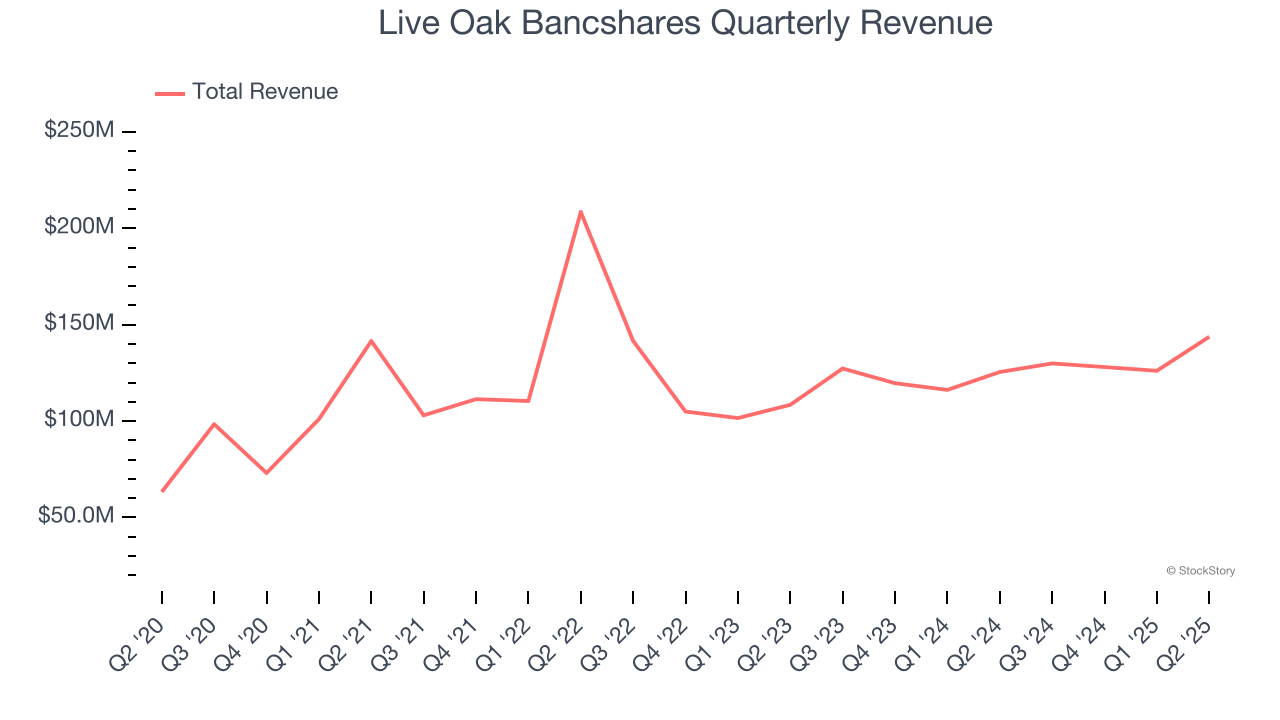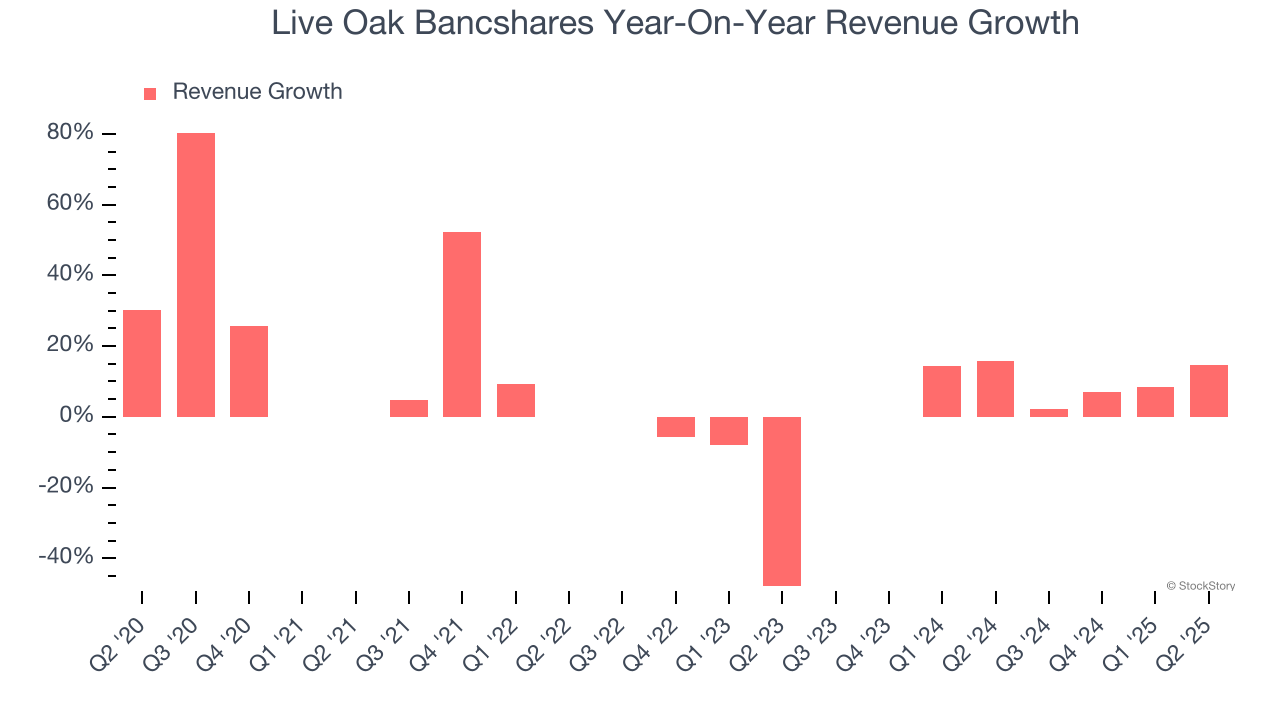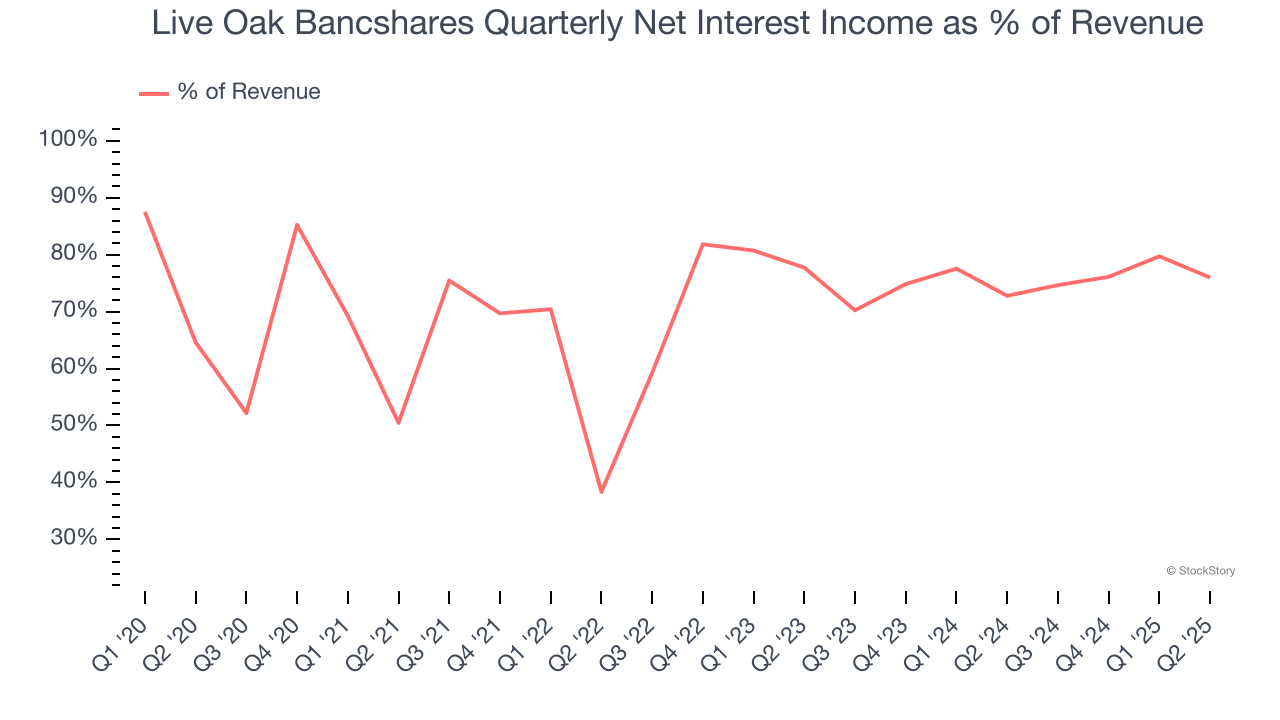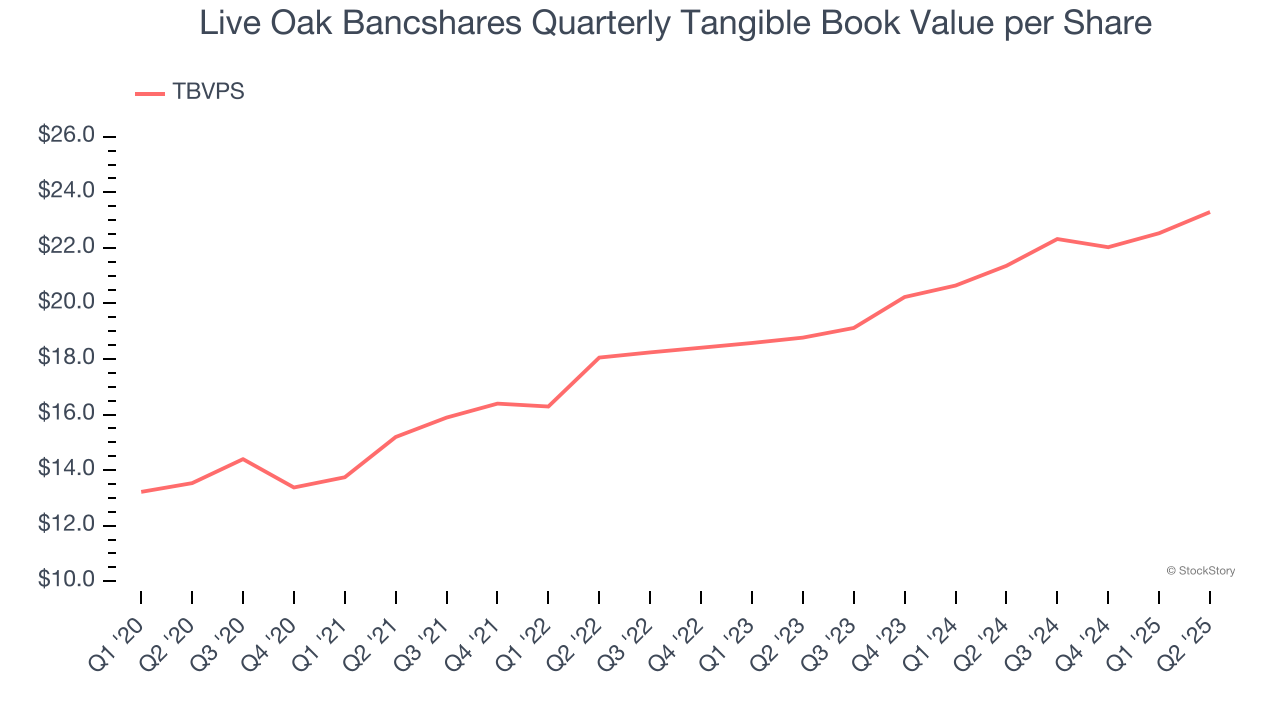
Digital small business lender Live Oak Bancshares (NYSE: LOB) reported Q2 CY2025 results exceeding the market’s revenue expectations, with sales up 14.6% year on year to $143.7 million. Its GAAP profit of $0.51 per share was 15% below analysts’ consensus estimates.
Is now the time to buy Live Oak Bancshares? Find out by accessing our full research report, it’s free.
Live Oak Bancshares (LOB) Q2 CY2025 Highlights:
- Net Interest Income: $109.2 million vs analyst estimates of $106.1 million (19.6% year-on-year growth, 2.9% beat)
- Net Interest Margin: 3.3% vs analyst estimates of 3.2% (flat year on year, 3.5 bps beat)
- Revenue: $143.7 million vs analyst estimates of $140 million (14.6% year-on-year growth, 2.7% beat)
- Efficiency Ratio: 62.1% vs analyst estimates of 59.6% (2.5 percentage point miss)
- EPS (GAAP): $0.51 vs analyst expectations of $0.60 (15% miss)
- Market Capitalization: $1.46 billion
“Live Oak Bank delivered an outstanding quarter in Q2, driven by excellent growth, healthy revenue, and lower provision expense,” said Live Oak Chairman and CEO James S. (Chip) Mahan III. “We remain focused on supporting our nation’s entrepreneurs as they continue to navigate a backdrop of uncertainty while also providing the service, technology and financial guidance they need to succeed.”
Company Overview
Founded during the 2008 financial crisis with a vision to reimagine small business banking through technology, Live Oak Bancshares (NYSE: LOB) is a bank holding company that specializes in providing online banking services and SBA-guaranteed loans to small businesses across targeted industries nationwide.
Sales Growth
Net interest income and and fee-based revenue are the two pillars supporting bank earnings. The former captures profit from the gap between lending rates and deposit costs, while the latter encompasses charges for banking services, credit products, wealth management, and trading activities.
Thankfully, Live Oak Bancshares’s 18.9% annualized revenue growth over the last five years was incredible. Its growth surpassed the average bank company and shows its offerings resonate with customers, a great starting point for our analysis.

We at StockStory place the most emphasis on long-term growth, but within financials, a half-decade historical view may miss recent interest rate changes, market returns, and industry trends. Live Oak Bancshares’s annualized revenue growth of 7.5% over the last two years is below its five-year trend, but we still think the results suggest healthy demand.  Note: Quarters not shown were determined to be outliers, impacted by outsized investment gains/losses that are not indicative of the recurring fundamentals of the business.
Note: Quarters not shown were determined to be outliers, impacted by outsized investment gains/losses that are not indicative of the recurring fundamentals of the business.
This quarter, Live Oak Bancshares reported year-on-year revenue growth of 14.6%, and its $143.7 million of revenue exceeded Wall Street’s estimates by 2.7%.
Net interest income made up 70.6% of the company’s total revenue during the last five years, meaning lending operations are Live Oak Bancshares’s largest source of revenue.

While banks generate revenue from multiple sources, investors view net interest income as the cornerstone - its predictable, recurring characteristics stand in sharp contrast to the volatility of non-interest income.
Unless you’ve been living under a rock, it should be obvious by now that generative AI is going to have a huge impact on how large corporations do business. While Nvidia and AMD are trading close to all-time highs, we prefer a lesser-known (but still profitable) stock benefiting from the rise of AI. Click here to access our free report one of our favorites growth stories.
Tangible Book Value Per Share (TBVPS)
Banks are balance sheet-driven businesses because they generate earnings primarily through borrowing and lending. They’re also valued based on their balance sheet strength and ability to compound book value (another name for shareholders’ equity) over time.
When analyzing banks, tangible book value per share (TBVPS) takes precedence over many other metrics. This measure isolates genuine per-share value by removing intangible assets of debatable liquidation worth. EPS can become murky due to acquisition impacts or accounting flexibility around loan provisions, and TBVPS resists financial engineering manipulation.
Live Oak Bancshares’s TBVPS grew at an incredible 11.5% annual clip over the last five years. The last two years show a similar trajectory as TBVPS grew by 11.4% annually from $18.77 to $23.29 per share.

Over the next 12 months, Consensus estimates call for Live Oak Bancshares’s TBVPS to grow by 8.7% to $25.31, decent growth rate.
Key Takeaways from Live Oak Bancshares’s Q2 Results
We enjoyed seeing Live Oak Bancshares beat analysts’ net interest income expectations this quarter. We were also glad its revenue outperformed Wall Street’s estimates. On the other hand, its EPS missed due to a worse-than-expected efficiency ratio. Zooming out, we think this was a mixed quarter. The stock traded up 1.8% to $33 immediately after reporting.
So do we think Live Oak Bancshares is an attractive buy at the current price? We think that the latest quarter is only one piece of the longer-term business quality puzzle. Quality, when combined with valuation, can help determine if the stock is a buy. We cover that in our actionable full research report which you can read here, it’s free.






